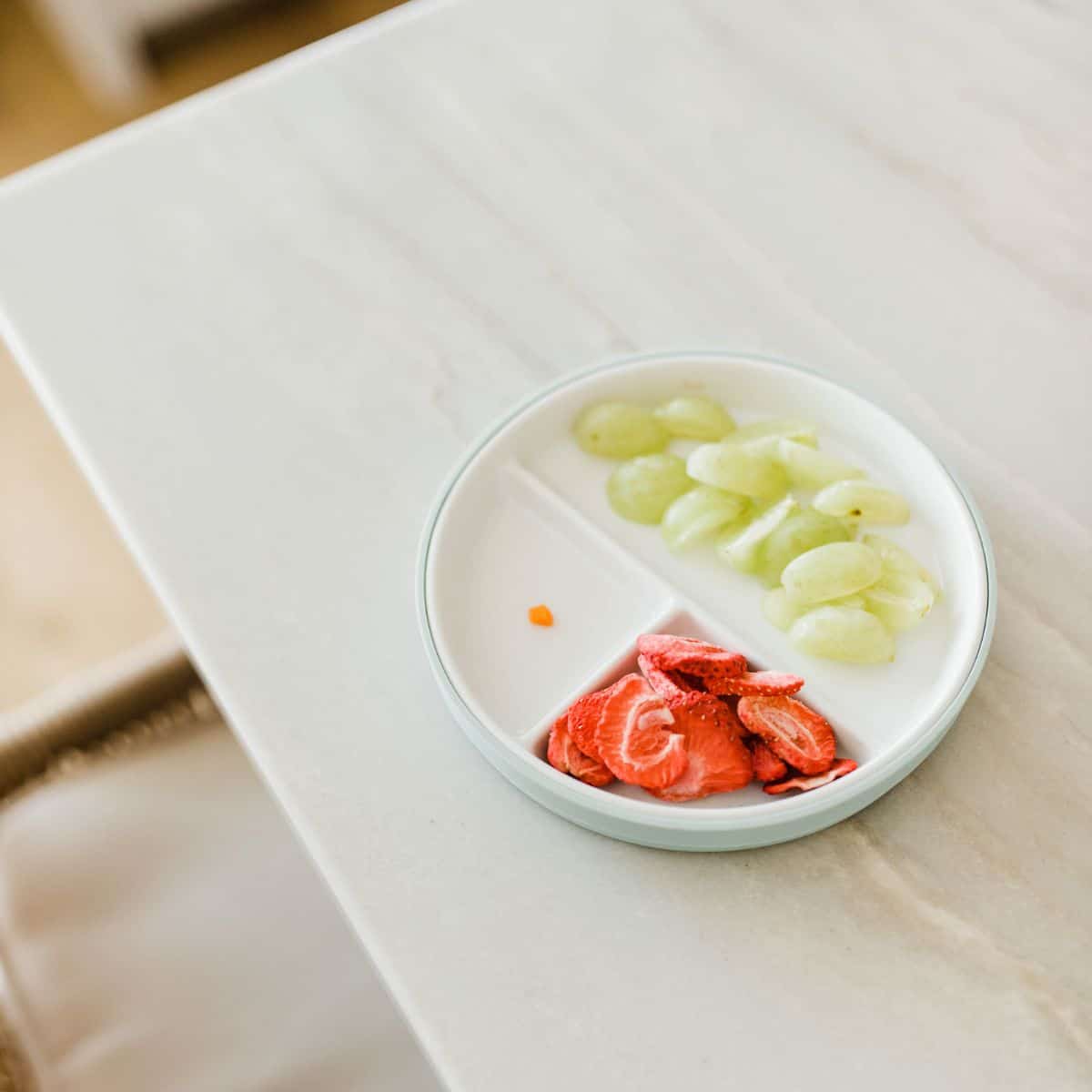Portion Sizes for Toddlers: How Much To Serve At Meals & Snacks
Apr 05, 2023, Updated May 21, 2025
This post contains affiliate links. Please see our disclosure policy.
When they’re babies, it’s more straightforward. There’s fewer variables. 2 then 4 then 8 oz per bottle. Breastfeeding 10 then 8 then 6 times per day. There are numbers involved. Friendly, reliable, peace-of-mind-giving numbers. And there’s a lot more certainty involved, too.
Then, your little one turns one. And just like that second nap you TREASURED…any feeding certainty you once had goes flying out the window. Now, you’re not just figuring out WHAT to feed them, but HOW MUCH to feed them and WHEN. You wonder if you should let them have as much food as they want or limit it. Or if you should limit one food over others (I’m looking at you, carbs!).
And then—even if you’re lucky enough to have some semblance of a plan—one day they just…don’t eat at dinner? Like, at all. And that takes you from “OMG I got this!” to “WTF I don’t got this!” in 10 seconds flat. (If it isn’t clear by now, I know this stress well.)
Okay, enough ranting! Let me give you what you came here to get: an idea AND a visual of what portion sizes for toddlers typically look like—broken down by age. And some easy go-to advice for the less-typical situations that come up. Like when your toddler won’t eat anything at dinner…but wants a snack 10 seconds later.
Disclaimer: this post contains affiliate links. As an Amazon Associate I earn from qualifying purchases at no extra cost to you.
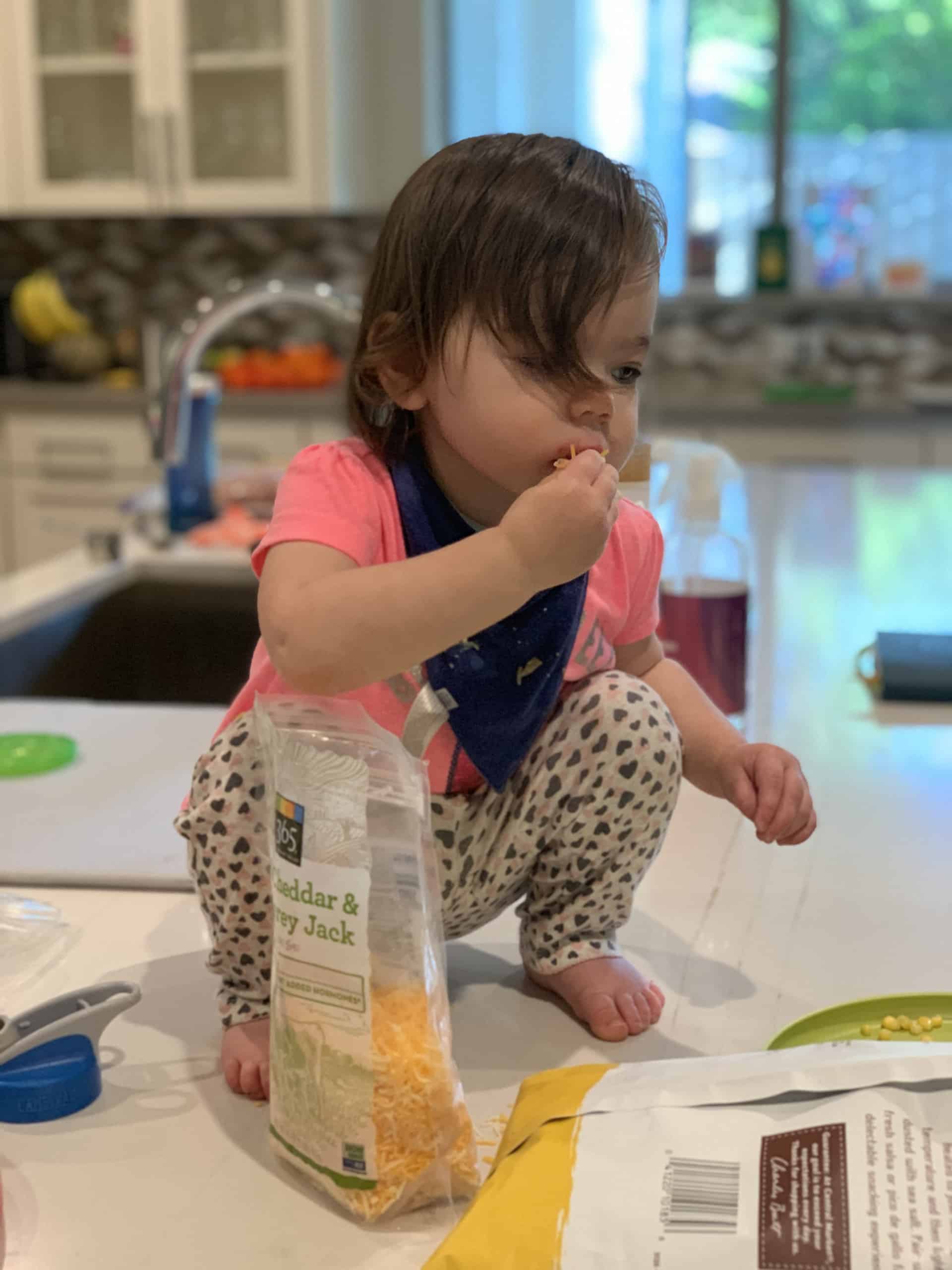
Table of Contents
- Toddlers Don’t Need Portion Control
- Starter Toddler Portion Sizes for Meals & Snacks
- Toddler Portion Sizes by Age
- How Many Calories Should a Toddler Have?
- Portion Sizes from 6 Months-1 Year
- Portion Sizes for a 1-Year-Old
- Portion Sizes for a 2-Year-Old
- Portion Sizes for a 3-Year-Old
- Portion Sizes for a 4-Year-Old
- Portion Sizes for a 5-Year-Old
- If Your Toddler Wants More of ONE Thing (Ahem…Fruit & Carbs!)
- With Toddler Portion Sizes, Less Is More
- Portion Guide for Pickier Kids
Toddlers Don’t Need Portion Control
Before we get into toddler portion size specifics, let me emphasize one thing: I DO NOT recommend portion control for toddlers or kids. I explain why kids don’t need portion control in this 4-minute video. But I’ll sum it up here, too:
- They know how to listen to their bodies. Kids are naturally intuitive eaters. They get the amount they need simply by tuning into their own bodies and their own hunger and fullness cues. Allowing them to eat when they’re hungry and stop when they’re full nurtures this skill set and makes it so that we don’t need to worry about them getting enough!
- Forcing kids to eat based on external cues can teach them to eat past fullness. This undermines their natural ability to listen to their bodies which can make eating more complicated for them as they grow up. If you’ve struggled with overeating or dieting and restricting in your life, you know what that feels like. I encourage you to quit the Clean Plate Club and move away from forcing your toddler to take 2 more bites. (Which I know can be a big shift if that’s how you were raised!)
- Restricting or limiting certain foods (like carbs or sweets) puts them on a pedestal. This can complicate kids’ relationships with food because they’ll start to believe some foods are “bad.” And, it can make them crave those off-limits foods even more! (This doesn’t mean zero boundaries with sweets, it just means we’re not demonizing or withholding them. If you want more detail on this, grab my free ebook on how to handle sweets.)

- Toddler appetites vary! No one can tell if you’re hungry or full by looking at you, right? Often, even you can’t predict it because appetites change from day to day and sometimes meal to meal. And the same is true for our kids. That’s why it’s important not to impose arbitrary limits or tell them they’re not hungry—THEY are the only ones who can truly gauge that.
Now, I’m not saying you should put an entire roast chicken on your toddler’s plate and let them have at it. Or open up a bag of Goldfish and let them go to town! That would be overwhelming for them…and it would lead to food waste—plus a HUGE mess—for you. Instead, I’m going to teach you to begin your toddler’s meal or snack with STARTER portion sizes and let them ask for more.
Related: Why Kids Shouldn’t Earn Their Dessert YouTube Video
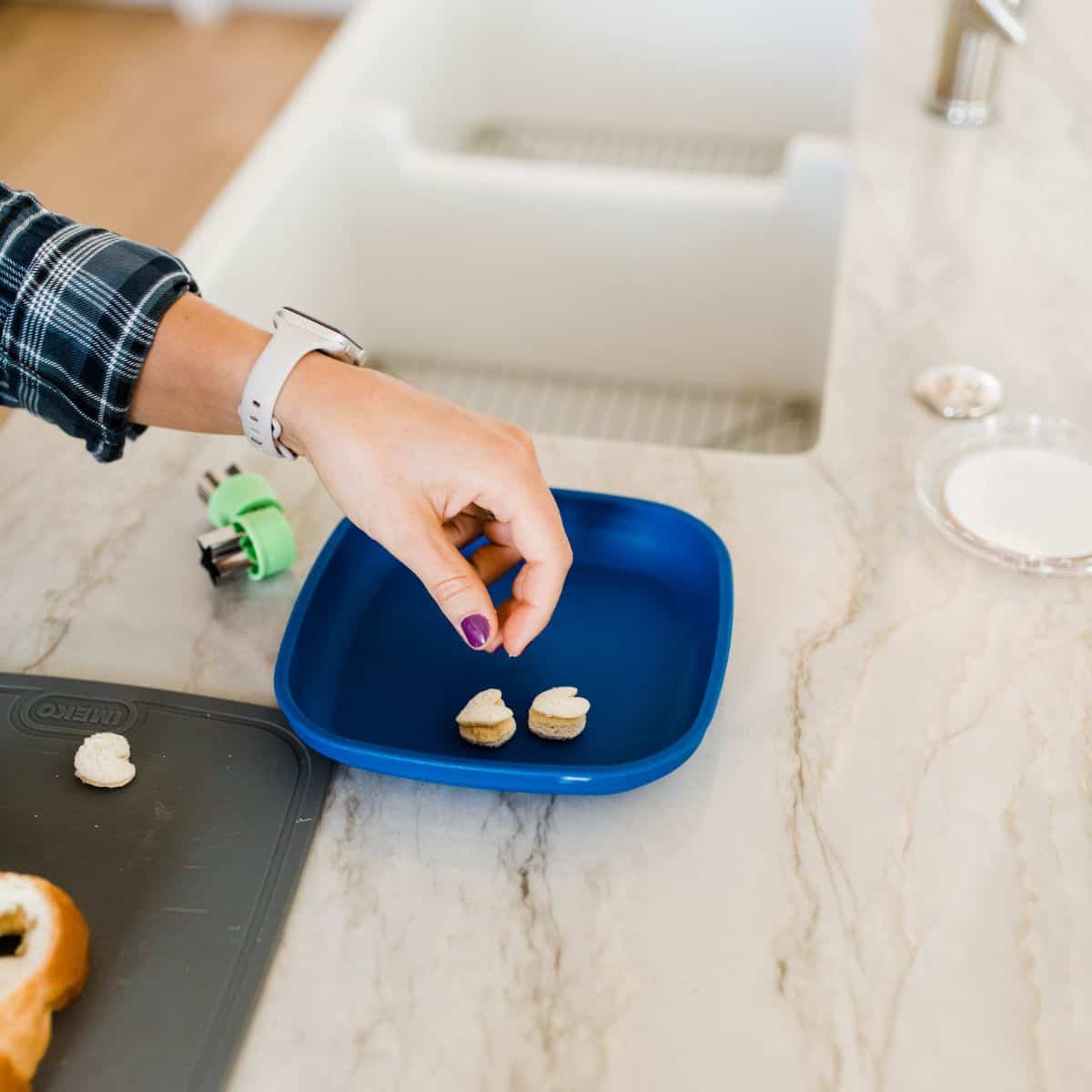
Starter Toddler Portion Sizes for Meals & Snacks
When you’re plating food for a toddler, use the literal rule of thumb. Start by serving one thumb-size portion (1 tbsp) of each food, per year of age. (Your thumb size, not your toddler’s!) So if you’re serving chicken and rice to a 1-year-old, they get 1 “thumb” of chicken and 1 of rice. If you’re serving yogurt and fruit to a 3-year-old, they get 3 “thumbs” of each.
You don’t need to get a tbsp out and measure each food or anything, either—just ballpark it. Think of a tablespoon as a dollop. Or, if you aren’t a big guesser, measure it out once with yogurt or black beans and then just eyeball it from there.
If they are a kid with a larger appetite and you KNOW they are going to eat more than that, that’s okay! You can increase the starter portion size to something that works better for your child.
👍 Thumbs up: If your child asks for more, give them more! Just do it one “thumb” at a time.
The Rule of Thumb is USUALLY the way to go—but not always. These are the times I’d recommend skipping it.
Toddler Portion Sizes by Age
Use the portion examples below as a starting point but know that on any given day, your child may ask for more (even 5 times more!) or eat less (maybe even nothing). And that is okay!
What this is:
- A simple guideline
- An example of what a starting point looks like for toddlers at different stages when they sit down for a meal or a snack.
What it’s NOT:
- A rule
- A limit
- Comparison fuel (I hope!)
All that said…here’s what a STARTER PLATE looks like for each age group.
How Many Calories Should a Toddler Have?
This really varies by kid and even by the day for your own kid! That is one of the main reasons I like starter portions as a dietitian, because it’s nearly impossible for you to guess exactly how much calories they need at a meal. With starter portions they stay in tune with their body’s cues and ask for more if they need more.
A 2-year-old may need around 1,000 calories, but they may need more or less! It depends on their gender, size, activity level, and more. So if you’ve tried to count up their calories and worry that it’s higher or lower than what the internet says the average is for their age, you don’t need to panic. Their overall growth and development is a better gauge of whether they are getting the right amount to eat.
Related:
Healthy Ways to Boost Calories in Your Toddler’s Diet (Alternative to Pediasure)
Portion Sizes from 6 Months-1 Year

From 6 months to 1 year of age, start by serving your child 0.5 to 1 Tbsp of each food. If they are doing baby-led weaning and you’re feeding them pieces of food, you’ll likely give them pieces that are 1 tbsp or more because they are easier to hold. That’s fine!
Foods are ALL new at this age, so starting slow is key. This is how you’ll get them used to textures, flavors, and the feeling of manipulating food in their mouth. If you see that your child loves a particular food, it’s okay to serve more of it! But in the name of not overwhelming them and not wasting food, avoid loading up their whole tray all at once.
At this stage, babies aren’t taking in a ton of calories from food (that will come when they master the pincer grasp around 10-ish months!), so don’t worry if they’re not getting a ton of ‘bites’ in. They’re learning valuable skills to set the stage for the next phase!
Related: The Ultimate Guide to Baby’s First Foods
Here’s a piece of soft cooked squash that is about thumb size that will be easier for them to hold, and you can really start by giving them just one of these. But they are likely to drop, throw, or just want more, and that’s fine!

Portion Sizes for a 1-Year-Old
Portions for a 1-year-old vary depending if your child just turned 1 or is closer to 2 because a LOT of eating development happens throughout this year. But using the rule of thumb looks like starting them off with 1 tbsp of each food on their plate—then increasing by thumb-sized increments if and as they ask for it. This nice thing about this year is that they’re likely better able to verbally communicate that they want more or not. That’s nice because it takes a lot of the guesswork out for you when they’re yelling, “CHEESE!!!!!”
But again, you might know that every single morning they eat a whole bowl of oatmeal, for example. You don’t have to serve them just a tablespoon at a time.
Your 1-year-old is much more adept at eating now than before, and they might have weaned from breastmilk or formula. They could also be drinking cow’s milk (or a dairy-free alternative), an excellent source of supplementary nutrition! Also, by 18 months, your child can safely eat many foods in their whole forms (like certain fruits and veggies). But choking hazards still apply, so be cautious with snacks like popcorn, chips, and grapes until your child turns 4!
Related: How To Feed Your 1-Year-Old (Includes a Feeding Schedule!)
I would slice up the avocado, I just took a picture before serving, but here is a sample breakfast starter portion:
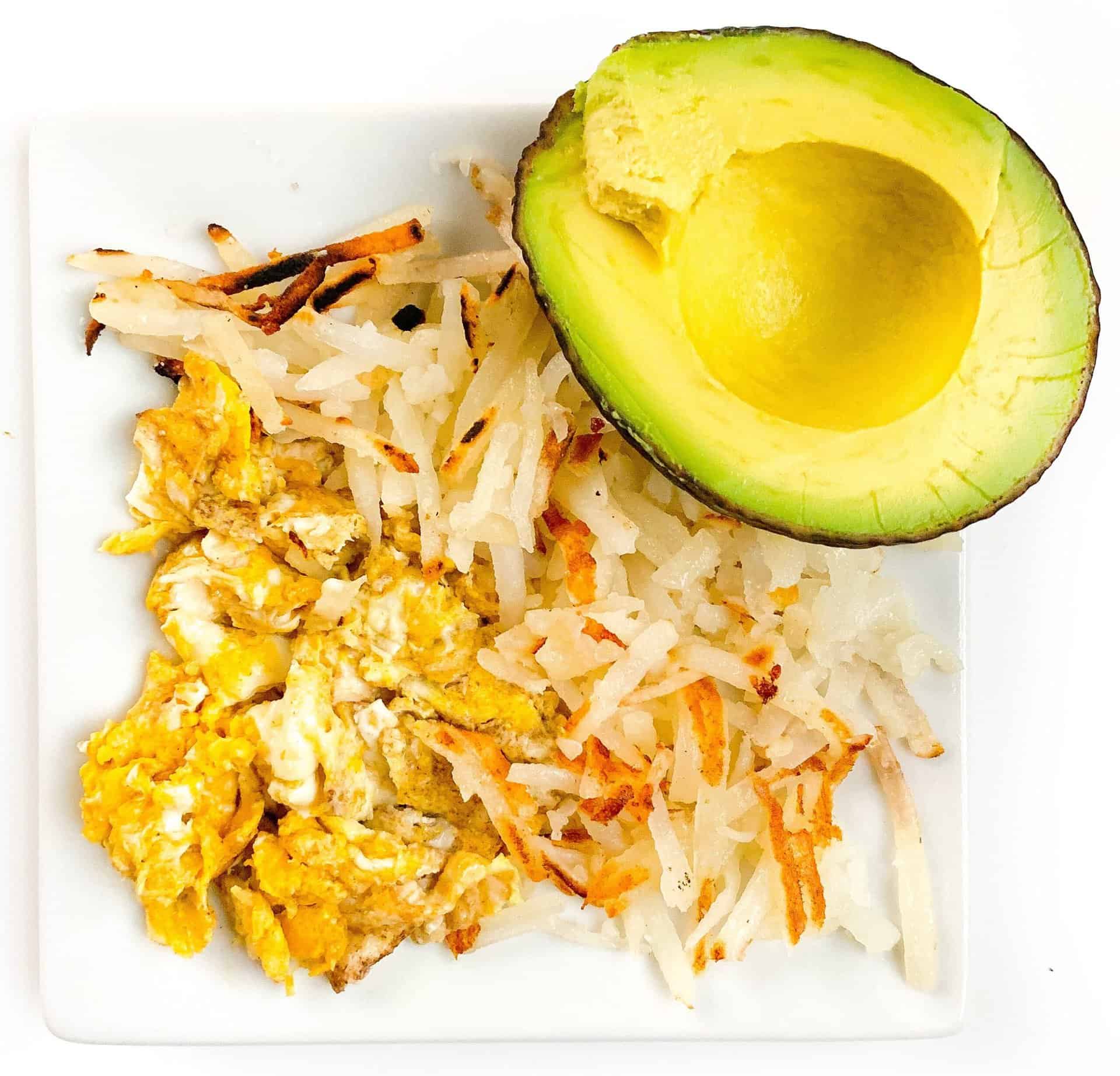
This is an example of serving a mixed dish, where there’s about 2 tbsp of the chicken stew, and 2-3 tbsp of orzo.
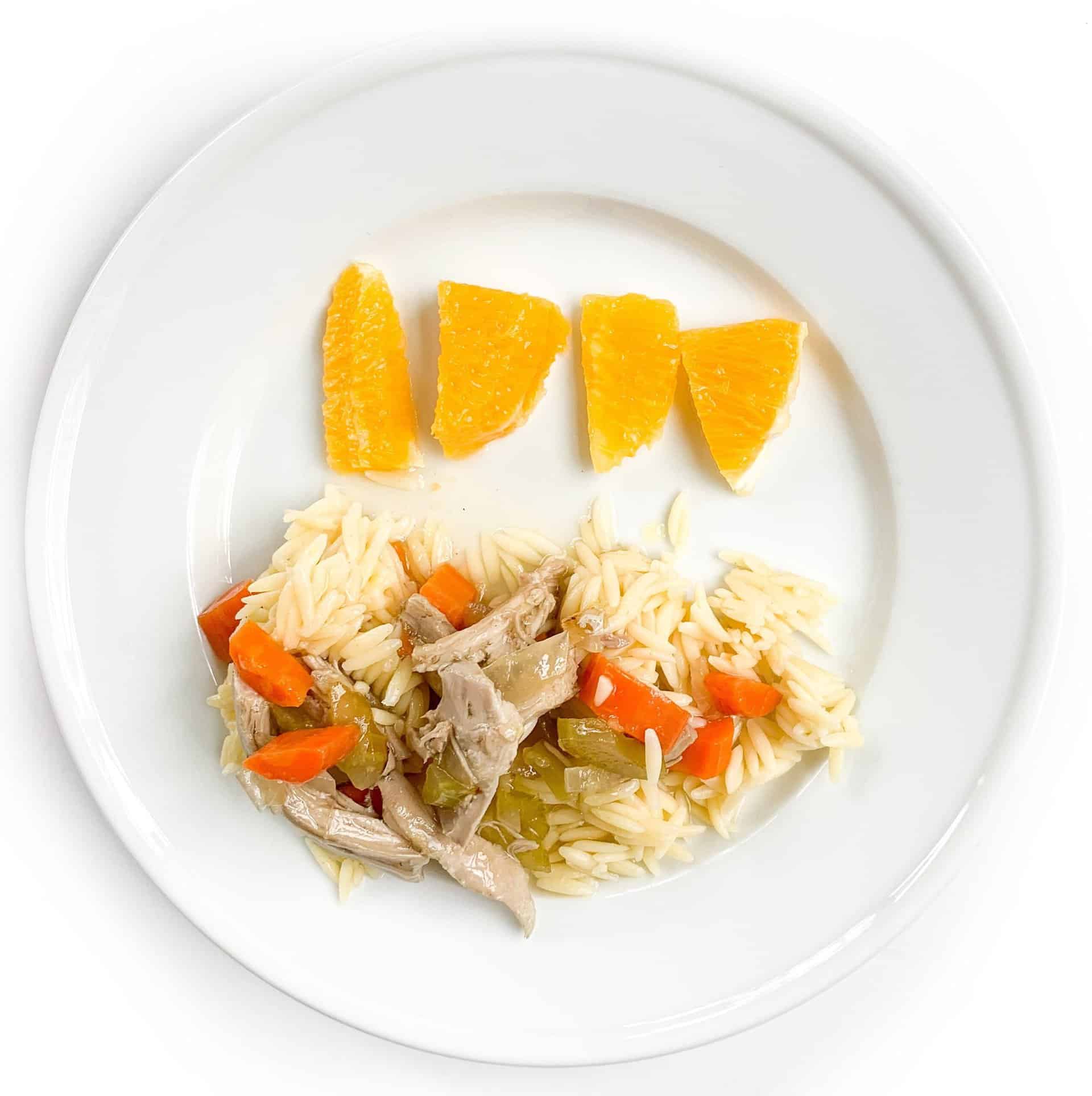
Portion Sizes for a 2-Year-Old
For a 2-year-old, the Rule of Thumb looks like starting them off with 2 tablespoons of each food that’s on their plate. (Remember, they can always have more, or eat less!)
At this age, you might also be packing lunches. And since that means you’re not around to give them more of what they ask for, you’ll want to err on the side of larger portions in case they’re really hungry that day. Or, add in an extra item that either supplements lunch or serves as a snack.
Related: 32 Toddler Lunch Ideas You’ll Love
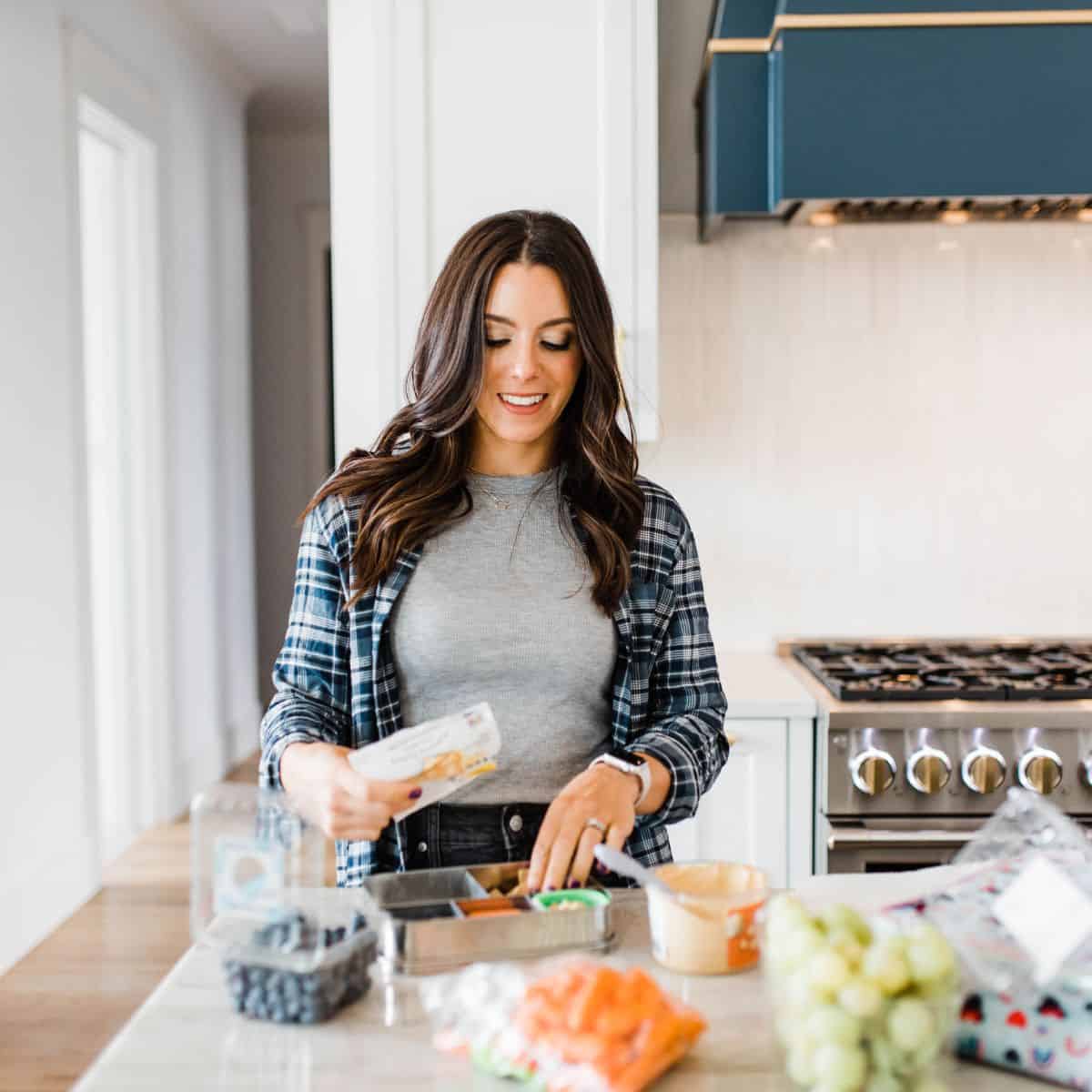
Here’s an example of a lunch I would pack. I’m not necessarily expecting that they will finish this all, but I want to have an amount in there that I know would be satisfying if they’re quite hungry. So this also might come home half eaten, and I know that is annoying from a food waste perspective. But you just have to expect that they’re not going to always eat it, and it’s good for them to listen to their fullness cues. I rather they not overeat and us have to tolerate some food waste.
My favorite stainless steel bento lunch box for kids
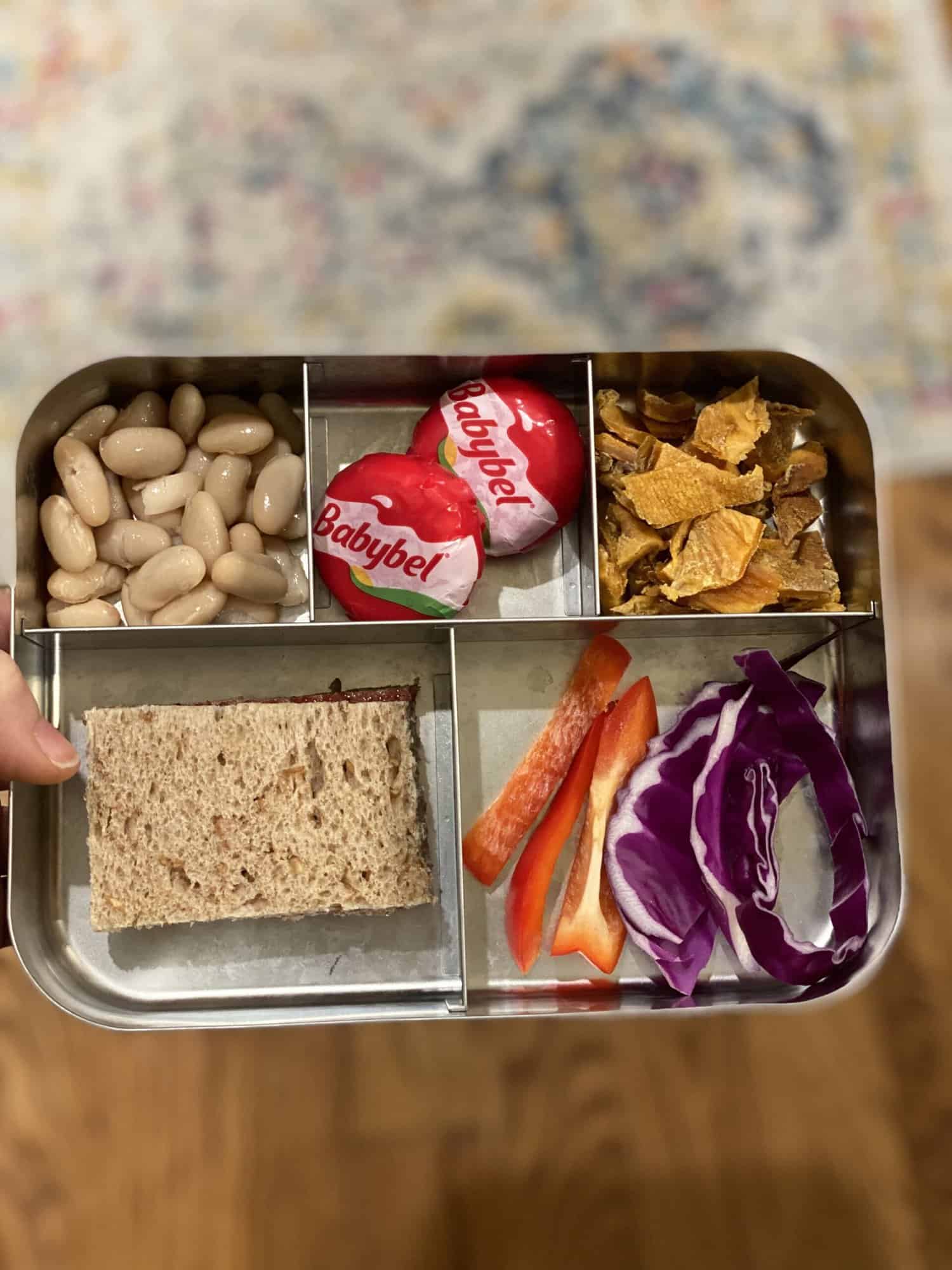
Here’s a dinner that I might serve to a 2 year old, where the baked potato is a bit larger of a serving (because I know they almost always eat that) and I go for more of a starter portion of the artichoke hearts and the cheesy meatloaf.

Portion Sizes for a 3-Year-Old
At 3, using the Rule of Thumb means starting your child with about 3 Tbsps of each food on their plate. This age comes with a lot of independence-seeking which is developmentally normal and a good thing for THEM….but can lead to lots of stress for YOU. Picky eating also commonly starts between 2 and 4 years of age—even for kids who weren’t picky babies. So if your mealtimes are starting to feel more like battlegrounds, you’re not alone.
(Think you’ve got a picky eater on your hands? Start here!)

To foster mealtime peace while still developing good food habits, focus on giving your child as much choice as you can (within limits) in what they eat. Let them pick between ranch or ketchup. Let them decide which plate they use. Let them have their favorite meal once or twice a week (even if it’s just nuggets!). And try to create flexible, low-pressure opportunities to eat.
Even if your child clearly doesn’t like certain foods, I do still want you to offer them, just with no pressure or expectation for them to take a bite. Because it takes a lot of exposures for kids to accept new foods sometimes. You can say, “You’re still learning to like that food!” when they throw the new food on the floor or dramatically gag while maintaining eye contact. 🙃

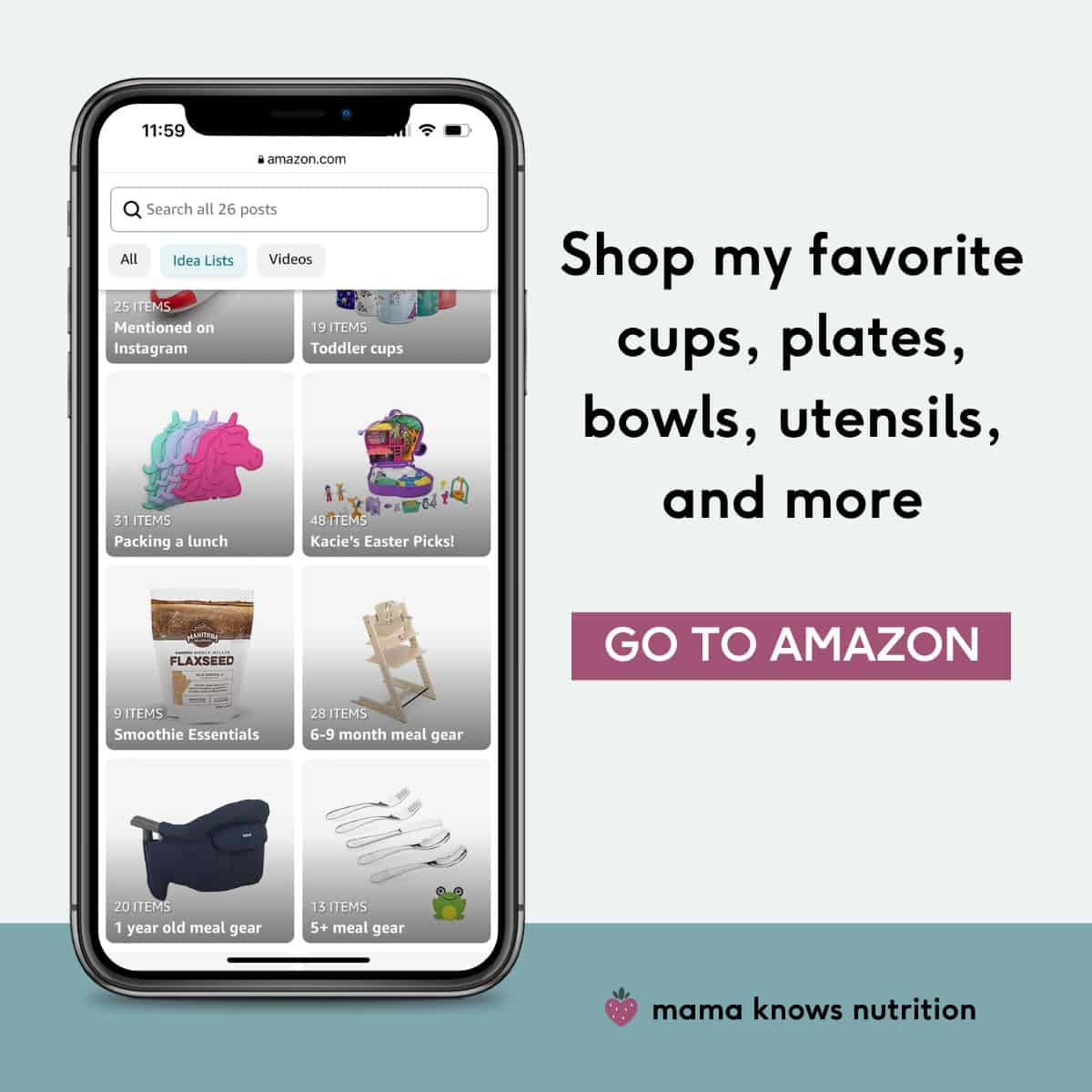
Portion Sizes for a 4-Year-Old
Rule of Thumb: 4 Tbsps of each food on their plate as a start – this is the same as a quarter cup. So you can use 1/4 cup as your frame of reference now for starter portion sizes!
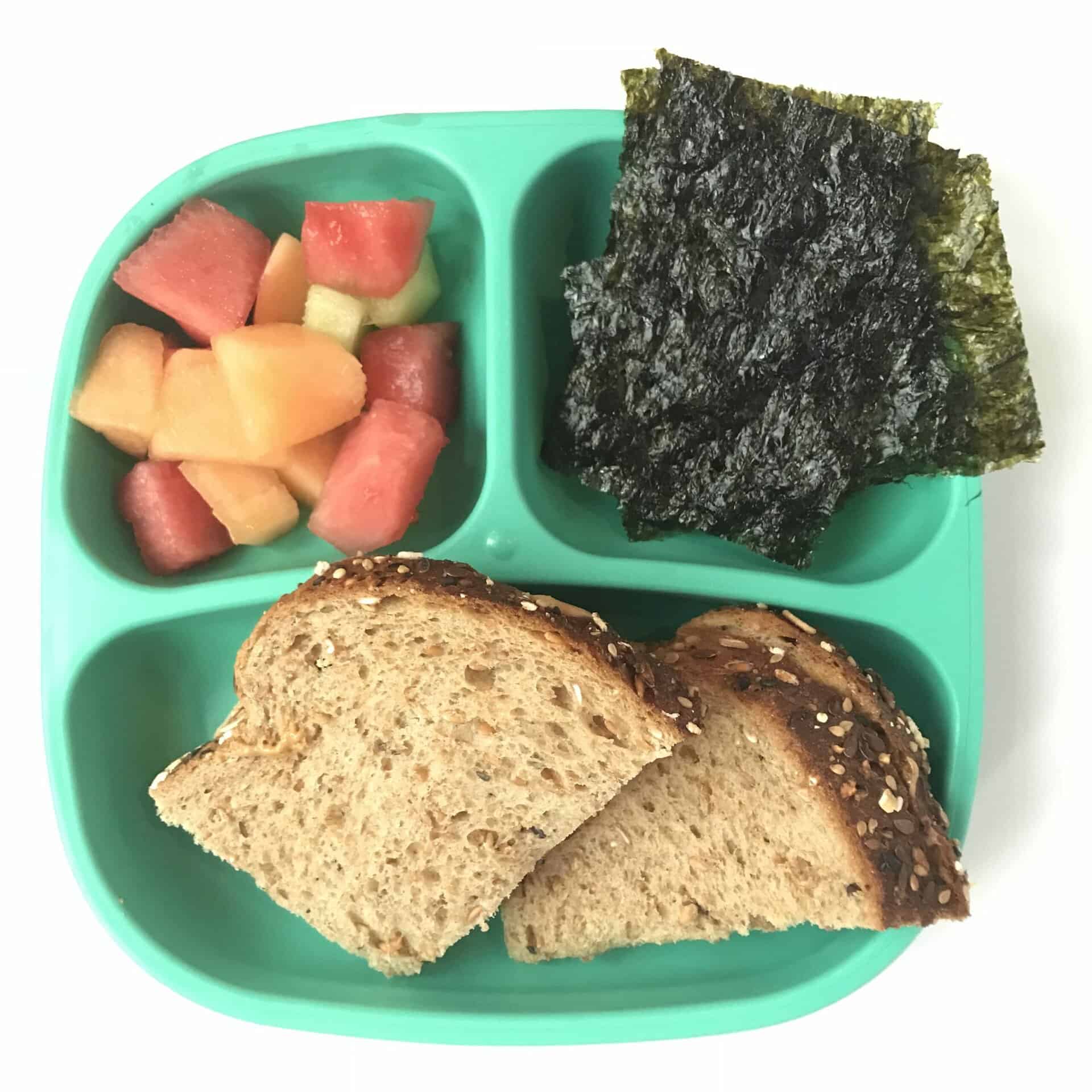
Portion Sizes for a 5-Year-Old
For your 5-year-old, continue to use the rule of thumb as a starting point, so about 5 Tbsp of each food (or ⅓ cup of each food). So if you’re serving 3 things, that’s about 1 cup of food total. (If you’re serving a mixed dish, a cup is about the size of a clenched fist.) But at this age, they’re probably almost ready to serve themselves—and they likely have an idea of how much food they want.
Young kids don’t tend to eat past fullness, so if they’re asking for it, you can trust that they’re hungry for it. We just don’t want to overwhelm them with huge portions to start with because that can be intimidating—especially for picky eaters! And, we want to help them check in with their bodies so they continue to notice their hunger and fullness cues and can respond to them accordingly.
You will also know your child’s appetite pretty well by this age. For example, one of my kids naturally has a larger appetite than the other. So if they were both 5 at the same time, I’d know that one would generally take and eat larger portions. There’s nothing wrong with that! Every body is different.
So for example, my bigger appetite kid would totally eat most of this cheeseburger at age 5, while the other one would typically eat closer to half and be just as satisfied with the meal.
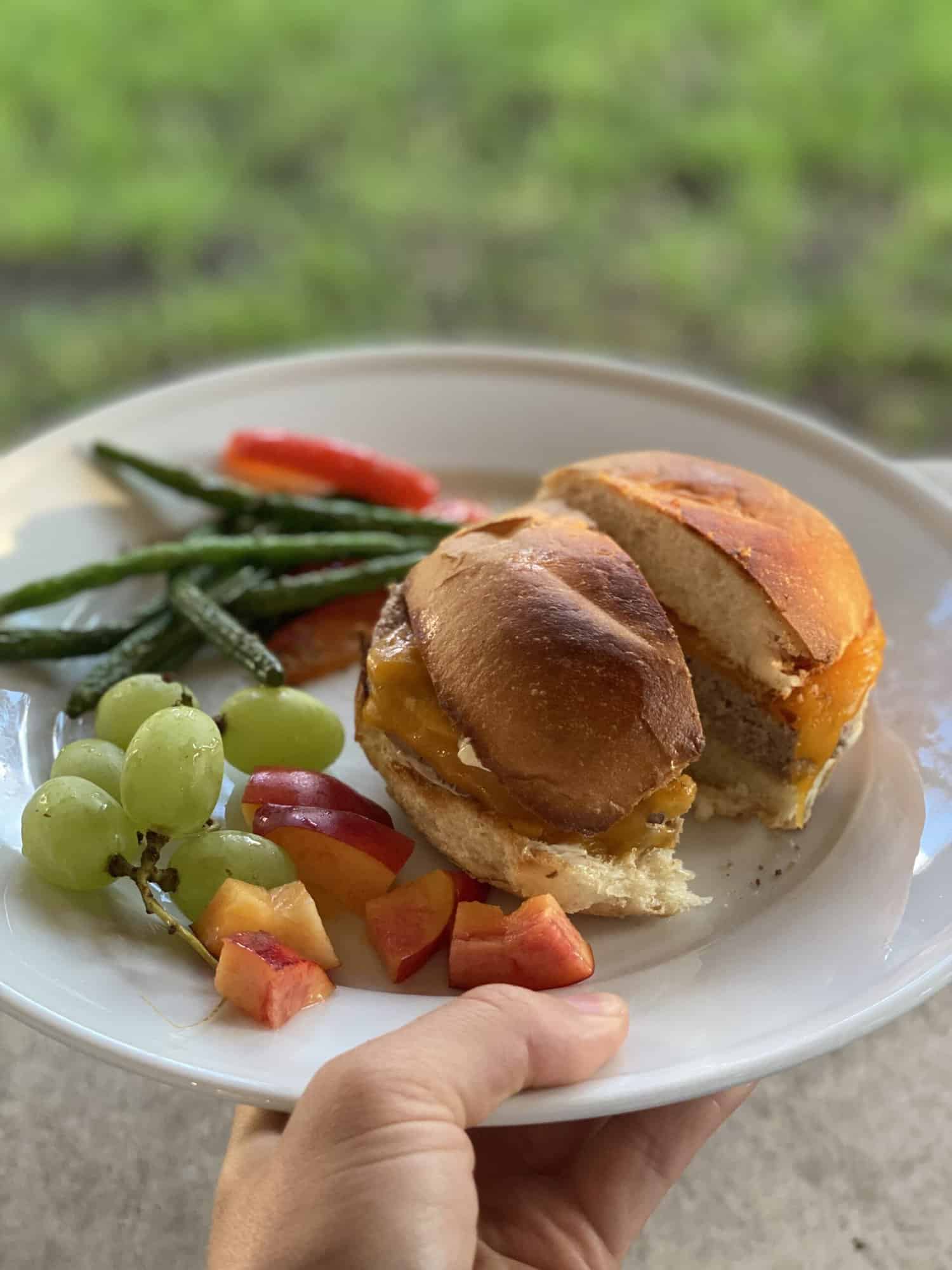
Related: Teddy Bear Hunger & Fullness Guide

If Your Toddler Wants More of ONE Thing (Ahem…Fruit & Carbs!)
If your toddler is asking for more food but they only want ONE specific thing, that’s okay. They won’t eat equal proportions of every item on their plate. And each kid won’t eat the same as any other kid. As a general rule, I typically DO offer more of what they’ve requested. But as the parent, it’s your job to choose what to serve them. So it’s okay to only have certain items at certain times or stick to an initial serving of one thing.
For example, if your child has already had a few glasses of milk that day, some yogurt, and 2 servings of cheese, and the only thing they want more of at dinner is cheese…it’s okay to say, “That’s all the cheese that’s on the menu for tonight!” or something like that.
But if you can, try to avoid saying things like, “You’ve had too much _____ today!” or “Why don’t you try to pick something healthier instead, like your veggies?” Because no one food item is “bad” and we don’t want to send the message that they’ve “overdone it.” It’s just that we may know that the amount of dairy they’ve had that day in their diet may lead to constipation or GI upset—or that eating more dairy means eating less of something else they need. So you might want to hold the boundary. (Here’s exactly how to do that.)
But if none of those factors are in play, then I’d be inclined to let them decide what sounds good to their body and let them have it.
With Toddler Portion Sizes, Less Is More
A word of advice: I DO want to make sure you’re offering your child enough of each food at mealtime. And I DON’T want you to worry about limiting what they eat. But with toddlers, more isn’t always better. Kids, especially the picky ones, get overwhelmed when their plates are too full—especially if those plates are full of new foods!
As a society, we tend to over-focus on protein. So try to remind yourself that even a few bites of protein can be plenty for them, even if it doesn’t look like a lot. 1 chicken nugget is typically about the size a tablespoon, so a 2-year-old eating about 2 chicken nuggets’ worth of a protein is fine!
If your child is still learning to like a food, put the tiniest piece on their plate. Don’t expect or force them to dig into a mountain of broccoli or a pile of peas. Instead, start with a few “sprinkles” of that food next to their pasta. A small amount like that might seem futile, but I promise it’s not. It still counts as an exposure to the food, and those exposures add up over time.
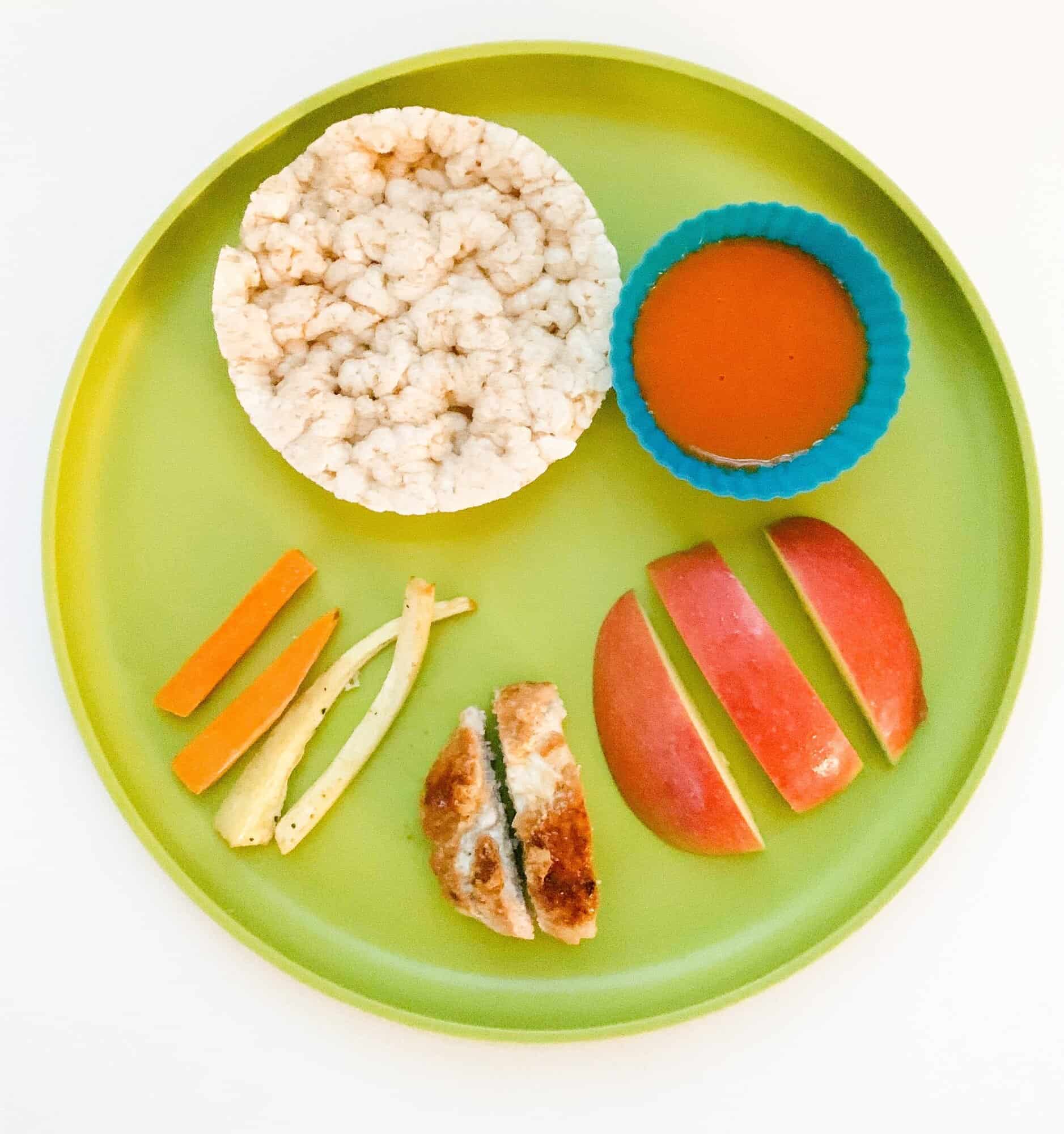
Portion Guide for Pickier Kids
Food they love: starter portion size for their age, or bigger
Food they generally like: starter portion for their age, or a little smaller
Food that is new/unliked: Teeeeny tiny bite – the size of a grain of rice
